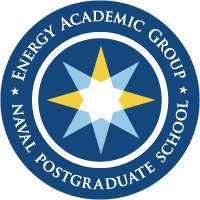December 13, 2013 - Energy Academic Group
Maximum Range Hydrogen Vehicles with Safe and Rapidly Refuelable Cryogenic Pressure Vessels
December 13th 2013
ME Auditorium
1300
Dr. Salvador Aceves
Energy Conversion and Storage Group Leader
Lawrence Livermore National Laboratory (LLNL)
Abstract
Cryogenic pressure vessels are composed of a high-pressure inner vessel made of carbon-fiber-coated metal (similar to those used for storage of compressed gas), a vacuum space filled with numerous sheets of highly reflective metalized plastic (for high-performance thermal insulation), and a metallic outer jacket. Cryogenic pressure vessels operate at low temperature (down to 20 K) and are designed for high pressure (350 bar). H2 density at these conditions is considerably higher (~2x) than for compressed H2, resulting in high capacity systems that store hydrogen at the maximum system density achievable. High H2 storage density also reduces the amount of expensive materials (carbon fiber and metal) necessary to store any given amount of H2, resulting in cost-effective systems that minimize ownership cost. Liquid hydrogen pumping enables rapid (5 minute) refueling. Finally, cryogenic pressure vessels have compelling safety advantages: outer vacuum jacket provides secondary protection and containment, and cryogenic hydrogen has low expansion energy compared to compressed gas. Long-term (~10 years) vacuum stability (necessary for high performance thermal insulation) is the key outstanding technical challenge. High temperature baking and custom getters are possible technical solutions.
Biography
Salvador Aceves is the group leader for Energy Conversion and Storage at Lawrence Livermore National Laboratory. During 21 years at LLNL, Salvador has researched diverse applications of thermodynamics and heat transfer to the transportation sector: analysis of electric and hybrid vehicles, hydrogen engines, and thermal and chemical kinetic analysis of combustion in engines. The concept of storing hydrogen in cryogenic pressurized vessels originated in 1996 when Salvador's modeling demonstrated that they would solve the fundamental problem of cryogenic hydrogen storage: high fuel venting rates. Subsequent experimental work demonstrated the practical potential of the technology. Salvador's group has built cryogenic vessel prototypes that have demonstrated the highest volumetric and gravimetric hydrogen storage performance. They also demonstrated the longest driving distance on a single hydrogen tank (650 miles). Recent interest in the technology from automobile manufacturers promises to incorporate this promising technology into practical, long range hydrogen vehicles that may assist in cleaning the environment and reduce dependence on fossil fuels.
POC
Dr. Daniel A. Nussbaum
Naval Postgraduate School
Principal, Energy Academic Group
Monterey CA 93943
Phone: 831-656-2387
Mobile: 831-324-3228
Email: dnussbaum@nps.edu


